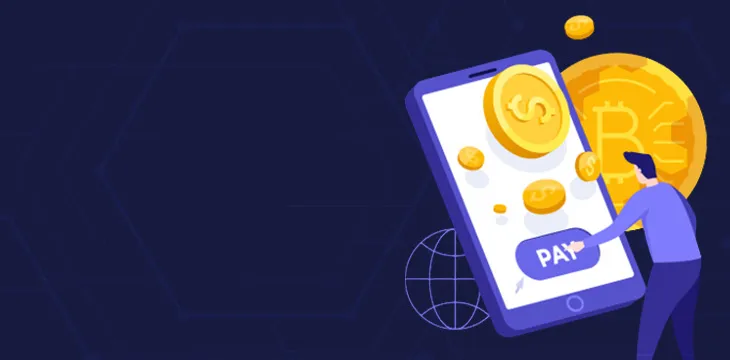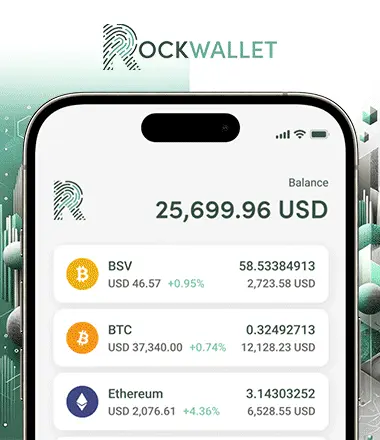The Bitcoin (BSV) blockchain maintains a public ledger that keeps a record of all the transactions that ever happened. Each node on the network has a complete copy of the ledger. Mining is the process in which new transactions between parties are verified and added to the Bitcoin (BSV) public ledger and how the blockchain is secured. Thus, blockchain mining is the mechanism in which new Bitcoin (BSV) coins are minted and introduced into the existing circulating supply.
The Fundamental Component of Mining
Bitcoin (BSV) mining is designed to be resource-intensive and challenging, so the number of blocks found each day remains constant. The process utilizes a consensus algorithm called Proof of Work or PoW.
Under PoW, miners compete against each other to solve a complicated mathematical equation so they alone can complete transactions on the Bitcoin (BSV) network for a given block. The puzzles are designed to be hard to solve, but when finished, the solutions can be quickly verified.
Once a miner finds the solution for a new block, they broadcast that block to the network. All other miners will verify that the answer is correct and that the block will be confirmed.
The underlying principle that controls the immutability and security of the Bitcoin (BSV) blockchain is cryptographic hashing. Satoshi Nakamoto used the SHA-256 hash function when creating the Bitcoin (BSV) protocols. Hashing outputs a 256-bit number represented in the 64 character hexadecimal number system for more natural human comprehension.
Blockchain mining difficulty is a measure of how difficult it is to find a new block, e.g. the higher the difficulty, the harder it is to find a block. Difficulty regularly adjusts, ensuring that the rate at which block mining occurs remains constant and proportional to the amount of hashing power within the network. For example, when new miners join the network increasing competition, the hashing difficulty will rise to prevent the average block time from decreasing. If miners leave the network, the hashing difficulty will go down, keeping the block time constant when there is less computational power dedicated to the system. The blockchain network modifies its difficulty levels after the discovery of every 2016 blocks.
How Does Mining Work?
Mining is a crucial element that allows the Bitcoin (BSV) blockchain to work as a decentralized peer-to-peer network with no third-party central authority. In broad terms, transactions get inserted into the blockchain by nodes when one party sends a Bitcoin to another. Miners run a unique software program to inscribe the blocks onto the Bitcoin (BSV) blockchain.
Nodes are the base of the blockchain. A node is a miner that connects to the Bitcoin (BSV) network to find blocks and process transactions. Nodes communicate with each other by transmitting information within the distributed system using the Bitcoin (BSV) peer-to-peer protocol. All network nodes receive the transactions then verify their validity.
What Happens After?
A miner collects transactions from the memory pool, individually hashes them, then assembles them inside a block. After the transactions become hashed, the hashes are organized into a Merkle Tree (or a hash tree).
A Merkle Tree is formed by arranging the various transaction hashes into pairs and then hashing them again. The output is organized into pairs and hashed once again then repeatedly, until “the top of the tree” is reached. The top of the tree is called a root hash or Merkle root. It is a single hash that represents all the previous hashes used in its generation.
The block’s header contains the following:
- Root Hash
- Hash of the previous block
- Timestamp
- Client software version
- Target
- A random number called a nonce
Hashing the block header results in the output being the block hash. The block hash will serve as the identifier of the newly generated block.
Mining a block is challenging because the SHA-256 hash of a block’s header must be lower than or equal to the target for the block to be accepted by the network. Miners continually hash the block header repeatedly, by iterating through the nonce until one in the network miner produces a valid block hash.
Once found, the originator node will broadcast the block to the Bitcoin network. Other nodes check to see if the hash is legitimate and, if so, append the block into their copy of the blockchain, so they have updated ledger then move on to mining the next block.
Failed Block Updates
Occasionally, two miners broadcast a valid block simultaneously, and the network ends up with two competing blocks. This “race condition” occurs because accepting a block into the blockchain network does not happen instantaneously. Miners have varying network speeds and connectivity. Whichever competing miner broadcasts their block to the most other miners will end up winning.
When this appears, miners begin to mine the next block based on the block they received first. The competition will continue until the next block is mined based on either one of the competing blocks. The rejected block is called a stale block or an orphan block.
The miners of this block will shift back to mining the winning block’s chain, forfeiting the block reward. Miners want to get on the longest chain quickly in order not to waste time and resources on continuously mining a chain that is orphaned.
Security Risk
In the off chance where a group or an individual has a large proportion of blockchain network’s mining power, they then potentially have the ability to corrupt the blockchain using their power. Controlling and damaging the blockchain through applying the mining power is known as a 51% attack.
Proof of Work helps to protect the Bitcoin (BSV) network against attacks. A successful attack would require a lot of computational power over a long period as an attack must be sustained to do any sort of real damage.
Therefore, it would be inefficient since the cost incurred would be higher than the potential rewards for attacking the network. For miners, it’s more beneficial to use their power to mine additional blocks fairly to generate profits as opposed to attempting an attack.
Block Rewards
The first step in blockchain mining is to add a coinbase transaction, e.g., a unique type of bitcoin transaction that can only be created by a miner. This transaction has no inputs, and there is one created with each new block mined on the Bitcoin (BSV) network. Block rewards and any transaction fees collected by the miner are sent in this transaction as compensation for finding the new block.
Admittedly, there’s more to the mining process on the Bitcoin (BSV) Blockchain. Thankfully, you can learn it along the way as you master Bitcoin concepts such as tokenization and smart contracts. Keep reading, and soon, you’ll become a cryptocurrency and blockchain expert, too!
Recommended for you
Tiny payments are changing the expenses landscape. Micropayments and nanopayments are not entirely new concepts and practices. But with the
You can earn money when you explore the world of Bitcoin and understand its intricacies. Once you get the hang

 07-18-2025
07-18-2025 



